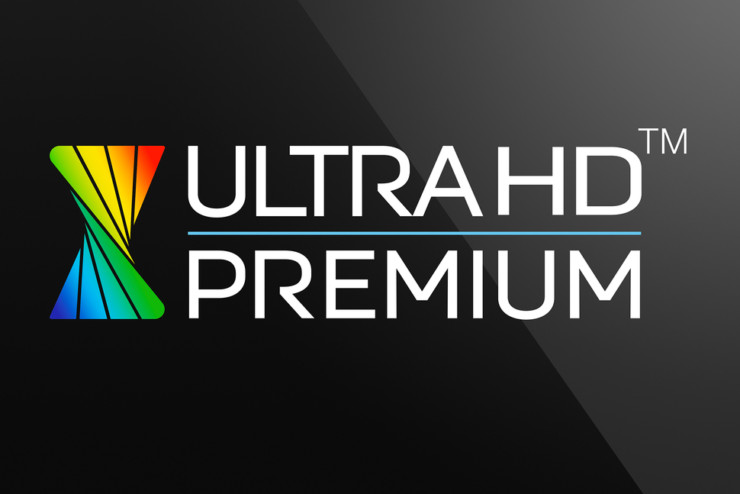SMPTE ST2084
As I said, the term HDR comprises several technological innovations that only together give the thumbnail image with extended dynamic range. Below we look at the various elements step by step and turn our attention first thing on a fundamental change of the conversion process, which ultimately transforms the video signal into light and in the visible image. While the so-called transfer functions used for this purpose (EOTF – electro-optical transfer function) were so derived the characteristics of the good old kinescope of the origins of television technology to date, there are now for the first time features that have been specifically tailored to the current and future display technologies , especially developed by Dolby Perceptual Quantizer (PQ) is noteworthy for our purposes, since it forms the basis for a standard that keeps coming up in connection with the subject of HDR: SMPTE ST2084. This ensured in future an efficient and high-quality transmission of HDR image data with many more brightness and color information and we will now take a closer look, what are these two core aspects of HDR -. Brightness and color – actually has to be
Brightness and colour depth
Displays are now represent a much larger maximum brightness and thus a total of greatly expanded brightness range capable. is expressed in the brightness of the unit of luminance (cd / m2), which is often replaced by the firmer abbreviation “nit”. Let’s take a look at current (HDR) display, the minimum luminance is close to 0 Nit, while peak values of up to 1000 Nit be achieved on the other side. Full concrete evidence gives about the Ultra HD Premium Certificate of Ultra HD Alliance, the technological reasons for HDR panels a brightness range between at least 0.05 and 1000 Nit (LED TVs) and 0.0005 Nit Nit and 540 (for OLED TVs are different standards) specifies. As enshrined in SMPTE ST2084 transfer function even goes far beyond these values, taking into account potentially also displays with a brightness range from 0 to 10,000 nit. Hence further consequences for the processing of the image information obtained: In order to playback such large areas of brightness without visible artifacts, it is essential to be able to absolutely represent very fine differences in brightness or gradations. Here is another important factor comes into play, which is relevant for the transfer and playback of HDR images and is often called. It is the colour depth or bit depth.
The colour depth is exactly the number of displayable gradations just mentioned. Since computer screens have in the past had a comparatively limited range of brightness, filed a color depth of 8 bits per color channel -.. D h respectively 256 gradations in the presentation of the three primary colors – in order to suggest the human eye an artifact-free image with smooth transitions. In order for this idea can also be produced in HDR images with potentially 10,000 Nit maximum brightness, it requires much more gradations and therefore a greater color depth. Currently, there are above all two values in space: First there is the 10-bit (1024 shades per color channel) working HDR-10 standard, which is used is used in all previous Ultra HD Blu-ray releases, officially supported by the Ultra HD Alliance is and is consequently also an integral part of the Ultra HD Premium certificate. Alternatively, there is the 12-bit standard Dolby Vision (4096 gradations per color channel), in which it is a development of Dolby Laboratories. Despite this apparent difference, and each with its own approaches to processing the metadata for the HDR rendering, sharing both variants a common basis. They are mainly based on the SMPTE standard ST2084.
Whether it turns out at the end of a variant as the better or clearly penetrated, is not yet in sight. What is certain is that Dolby Vision will find wider support in the future. Various Hollywood studios have signaled willingness to cooperate, Netflix is already working with both HDR formats and Amazon Video will follow suit soon. Also Ultra HD Blu-ray releases that support both 10-HDR and Dolby Vision, are conceivable for the future.
ITU-R Recommendation BT.2020 / Rec.2020 and DCI-P3
Since we have now arrived at the topic “colors”, it offers itself as Next, a few words about BT.2020 or Rec.2020 lose. Regular dive on the synonymous terms, when it comes to the color space of the new HDR images and actually is an extended color space an integral part of the ITU-R Recommendation BT.2020 (ITU stands for International Telecommunication Union). This is massively expanded in contrast to the current standard color space BT.709 and no longer covers 35.9%, but impressive 75.8% of the perceptible to humans color spectrum from. Moreover treated BT.2020 but also a number of other aspects of the UHD resolution than the frame rate up to the bit rate and even includes the Audio – Keyword multichannel playback – with a. In this respect it is important again to point out that this is just at BT.2020 a type directive for further development, which practically takes place in several stages. Only in the coming years will therefore (presumably) gradually implemented all elements, this includes about the final 8K resolution, but also comprehensive, fully support the BT.2020 color space.
As technology development is not yet here simply so far, we will have to give us until then with intermediate stages satisfied. With regard to the color space is the solution currently DCI-P3, another color space specification, which comes from the US film industry and was developed for digital cinema projectors. This covers at least 45.5% of the perceptible to humans color spectrum and is thus positioned between the BT.709- and BT.2020 color space. So although BT.2020 sets the direction, the current provisions for playback devices Premium certification is loud Ultra HD, the representability of at least 90% of DCI-P3 color space.
Wide Color Gamut (WCG)
Closely related to this issue is again the term “Wide Color Gamut”, Which Refers gene rally Directly on the display and in Particular lighting technology. Basically, it is important did Both the LED backlight and the self-luminous OLEDs in detail Certainly has differences. So LEDs are coated, for example with phosphorus or alternatively so-called nano-particles and OLEDs are so Several design principles. This in turn leads to direct Consequences for ability of a display to be able to play content with extended color information perform adequately. The designation for the respectivement technologies did enable the “Wide Color Gamut”, of course, vary from manufacturer to manufacturer and are evolving, currently They are called, for example:
Samsung – Quantum Dot
Sony – Triluminos
Panasonic – Wide Color Phosphor
LG – Perfect Color
Conclusion
We had arrived at the end of our survey of key terms around the topic of HDR. Since the introduction and development of HDR was shot at several technological screws in the background in the course and is rotated further in the future, there is an equally complex but fascinating field. Already the first generation of HDR images definitely knows to inspire and clearly suggests that even one or the other eye-opening experience will stand us into the house until the recommendation BT.2020 will be appropriate in their entirety.


